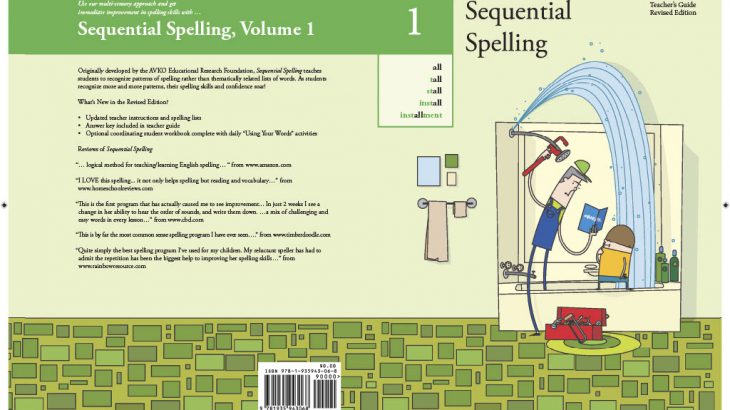First, let me say that I am not connected to Sequential Spelling publisher, AVKO, or to the author, Don McCabe. I’m reviewing the series because I tutor dyslexic students. I’ve used mountains of curriculum over 30 years and pitched most of it. This one I keep. In fact, I keep multiple copies of all seven levels. It’s one of the items I demo and recommend most often at workshops for teachers and parents. I use it both one-on-one and in a classroom.
Dyslexia Mangles Spelling
Many students with dyslexia who do phonemic awareness training such as Orton-Gillingham, later come to me to achieve higher fluency and reading speed. After learning to read fast with high comprehension, they remain terrible at spelling.
Reading lots of books simply does not translate into good spelling. Students who can recite over 200 rules of phonetic spelling, still can not apply those rules with ease! The reason is simple. Phonemic awareness is an area of weakness for dyslexics, even after years of intensive, multi-sensory phonics training. Teaching spelling using phonemic awareness means using the weakest tool in the box; that’s frustrating and inefficient.
Teach Spelling Using Dyslexic Strengths
Happily, an extremely dyslexic educator and author, Don McCabe, used his own frustrating experience with spelling to write a program for developing spelling sense. He based this on the dyslexic strength of pattern recognition. He wisely structured it to be stress-free. Although tests are provided for those who want to record progress, the curriculum works best, in my opinion, without the tests. I often hear students laughing out loud during spelling! When students are happily learning, you can bet you are teaching to their strengths!
How Sequential Spelling Works
Daily word lists follow a pattern. For example, Level 3 book includes rain, train, strain, restrain, and restraints. I don’t bore students with spelling rules unless the student asks. Instead, I read the word, use it in a funny sentence, then let the student try to spell it. I give students whiteboards or scratch paper and markers and encourage them to write large and be creative. These papers serve for learning, not grading. If the student spells the word correctly I acknowledge it; “That’s right! Nice job!” If incorrect, I say, “Good try, but the dictionary spelling is a little different. Just put a line through that one, and spell it this way.” I spell the word aloud, and write it if needed. Once the student writes the word correctly, I say, “That’s exactly right! Perfect!” Then we move on. I’ve used this method with students as young as second grade, up through adults.
What You Need to Use Sequential Spelling
There are seven levels of Sequential Spelling, presented as paperback booklets, each with 180 lists. I like to use one list each day. Doing a list with a student takes anywhere from 5 to 20 minutes depending on how many words need to be corrected. The levels do not correspond to grade levels, but rather indicate level of difficulty. Doing all seven booklets over seven years of schooling produces outstanding spellers and a splendid vocabulary, but even doing half of book 1 with a student who moves on and never finishes the series proves extremely beneficial. I’ve marveled at the progress students make from even a few of the lessons. AVKO also sells teacher’s manuals. They add lots of tips and techniques but are not necessary in order to use the program.
Why Does Sequential Spelling Work for Dyslexic Students?
Most importantly, Sequential Spelling builds spelling sense based on pattern recognition instead of phonics. Pattern recognition is a dyslexic strength, thus the student experiences success. Next, the program does not shame or embarrass but instead allows for constant positive reinforcement. Significantly, the words are presented in context every time they are used, by including them in a sentence. The best sentences cause the student to laugh and link to the student’s interests. Since context analysis is another dyslexic strength, the student experiences even more success. There is nothing like success to keep a student engaged! By allowing the student to write the words in any size, in any color or many colors, adding decorations or illustrations, the student spends quality time with each word building mental images that can be recalled later.
Who Should Use Sequential Spelling?
Any teacher or tutor who feels fine being funny and silly with kids, who isn’t worried about perfectly neat rows of words, and who can make their way through the word lists without ever saying something horrible like “you spelled that right yesterday — why did you misspell it today?” will find this a wonderful tool. I recommend it highly. I’ve had great success using Sequential Spelling, most notably with students who are dyslexic or English language learners.
Reviewed by Yvonna Graham, M.Ed.
www.dyslexiakit.net
@GrahamYvonna
